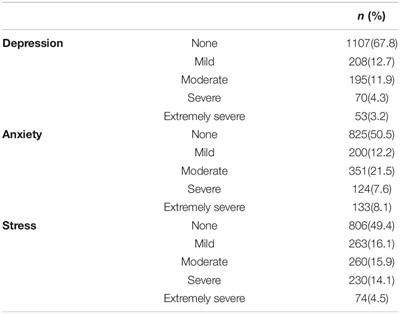People with mental health conditions often find psychotherapy-or “talk therapy”-very helpful. The type and length of your therapy will depend on your personal situation and insurance, and your therapy may be part of an overall treatment plan that includes medication or other treatment options.
Talking with a therapist or counselor can help you deal with thoughts, behaviors, symptoms, stresses, goals, past experiences and other areas that can promote your recovery. Of course, talking with a therapist about personal issues can be tough, but it can help you come to grips with problems in your life. It can also offer an emotional release and a sense of really being heard, understood and supported.
Therapy can help you to:
- feel stronger in the face of challenges
- change behaviors that hold you back
- look at ways of thinking that affect how you feel
- heal pains from the past
- build relationship skills
- figure out your goals
- strengthen your self-confidence
- cope with symptoms
- handle strong emotions like fear, grief or anger
- enhance your problem solving skills
Types of Therapy
What to Expect
Getting the Most Out of Therapy
Types of Therapy
There are many different types of therapy, including those that are most effective with families or groups of people. You can learn about your options by talking with people you trust, like your family doctor or clergy, with people who have experience with mental health conditions, or with staff at your local Mental Health America affiliate.
You might ask therapists you’re considering if they use a particular type of therapy and how it works. You may get more out of therapy if you understand how the process usually works and how the therapist thinks it will help you. Some therapists will blend a few different approaches together to suit your particular needs.
The following are a few common types of therapy:
- Cognitive-behavioral therapy (CBT) has two main aspects. The cognitive part works to develop helpful beliefs about your life. The behavioral side helps you learn to take healthier actions. CBT often works well for depression, anxiety and bipolar disorder, but it can also be used for other various conditions.
- Interpersonal therapy focuses largely on improving relationships and helping a person express emotions in healthy ways. This approach often works well for depression. A variation of it called “interpersonal and social rhythm therapy” often works well for bipolar disorder because it also helps develop a daily schedule that supports recovery.
- Family therapy helps family members communicate, handle conflicts and solve problems better. Forms of family therapy often are used for treating eating disorders and bipolar disorder.
- Psychodynamic therapy helps people develop a better understanding about their unconscious emotions and motivations that can affect their thoughts and actions.
- Art therapy can include using music, dance, drawing and other art forms to help express emotions and promote healing.
- Psychoeducation helps people understand mental health conditions and ways to promote recovery.
For more information on types of therapy visit the National Institute of Mental Health website at http://www.nimh.nih.gov/health/topics/psychotherapies/index.shtml.
In addition to different types of therapy, each therapist has different amounts and types of training. For example, a psychiatrist is trained in therapy but also has a medical degree and can prescribe medication. A pastoral counselor will include a religious or spiritual approach to treatment. Other therapists may be trained to deal with substance use issues.
What to Expect
Depending on your situation, therapy can be fairly short or longer-term. Often, people see their therapists once a week for 50 minutes. Your first session will be different from future visits. The initial visit is more of a “getting to know you” session and will help your therapist get an idea of how to proceed with your treatment.
You have a right to feel safe and respected in therapy. If you’re concerned, you can ask about confidentiality. Usually, though, it’s understood that a therapist respects your privacy; and that group members do too, if you’re meeting in a group. Therapy should address your needs, goals, concerns and desires. If you’re going to be talking to someone about your most personal thoughts, you want to feel comfortable.
You can think about what traits might make you feel more comfortable with a therapist. For example, would you prefer to see:
- a man or woman
- someone older or younger
- someone from your cultural background
- someone with a style that’s more formal or friendly
Get additional information about therapy at Psych Central.
Therapy may not help you immediately. Over time, though, it can help you develop more coping skills, stronger relationships and a better sense of yourself.
Getting the Most Out of Therapy
Therapy likely will work best if there is a partnership between you and the therapist. Don’t just sit there! Take an active part in your sessions.
You can strengthen your therapy in many ways.
- Tell your provider your goals for treatment. Think about whether there are certain behaviors or issues you care about most.
- Keep an open mind. Be willing to consider new ways of behaving and thinking that might improve the quality of your life. We all resist change, so don’t be surprised if you are tempted to quit right before some real changes happen.
- If you think you’re not making progress, you should tell your provider. A good therapist will want to work with you so you can get the most out of your sessions. After discussing your concerns, if you’re still not comfortable, you might consider meeting with another therapist for advice and possibly switching.
- Be open and honest. Your therapist can’t really help you if you don’t share the whole picture. Don’t say you’re fine if you’re not.
- Take your therapy home. You might consider keeping a journal or other ways to focus on what you’ve been discussing in therapy. Think about ways to use ideas from therapy in your daily life.
What is Psychotherapy?
Learn about psychotherapy.
Psychotherapy, or talk therapy, is a way to help people with a broad variety of mental illnesses and emotional difficulties. Psychotherapy can help eliminate or control troubling symptoms so a person can function better and can increase well-being and healing.
Problems helped by psychotherapy include difficulties in coping with daily life; the impact of trauma, medical illness or loss, like the death of a loved one; and specific mental disorders, like depression or anxiety. There are several different types of psychotherapy and some types may work better with certain problems or issues. Psychotherapy may be used in combination with medication or other therapies.
Therapy Sessions
Therapy may be conducted in an individual, family, couple, or group setting, and can help both children and adults. Sessions are typically held once a week for about 30 to 50. Both patient and therapist need to be actively involved in psychotherapy. The trust and relationship between a person and his/her therapist is essential to working together effectively and benefiting from psychotherapy.
Psychotherapy can be short-term (a few sessions), dealing with immediate issues, or long-term (months or years), dealing with longstanding and complex issues. The goals of treatment and arrangements for how often and how long to meet are planned jointly by the patient and therapist.
Confidentiality is a basic requirement of psychotherapy. Also, although patients share personal feelings and thoughts, intimate physical contact with a therapist is never appropriate, acceptable, or useful.
Psychotherapy and Medication
Psychotherapy is often used in combination with medication to treat mental health conditions. In some circumstances medication may be clearly useful and in others psychotherapy may be the best option. For many people combined medication and psychotherapy treatment is better than either alone. Healthy lifestyle improvements, such as good nutrition, regular exercise and adequate sleep, can be important in supporting recovery and overall wellness.
Does Psychotherapy Work?
Research shows that most people who receive psychotherapy experience symptom relief and are better able to function in their lives. About 75 percent of people who enter psychotherapy show some benefit from it.1 Psychotherapy has been shown to improve emotions and behaviors and to be linked with positive changes in the brain and body. The benefits also include fewer sick days, less disability, fewer medical problems, and increased work satisfaction.
With the use of brain imaging techniques researchers have been able to see changes in the brain after a person has undergone psychotherapy. Numerous studies have identified brain changes in people with mental illness (including depression, panic disorder, PTSD and other conditions) as a result of undergoing psychotherapy. In most cases the brain changes resulting from psychotherapy were similar to changes resulting from medication.2
To help get the most out of psychotherapy, approach the therapy as a collaborative effort, be open and honest, and follow your agreed upon plan for treatment. Follow through with any assignments between sessions, such as writing in a journal or practicing what you’ve talked about.
Types of Psychotherapy
Psychiatrists and other mental health professionals use several types of therapy. The choice of therapy type depends on the patient’s particular illness and circumstances and his/her preference. Therapists may combine elements from different approaches to best meet the needs of the person receiving treatment.
- Cognitive behavioral therapy (CBT) helps people identify and change thinking and behavior patterns that are harmful or ineffective, replacing them with more accurate thoughts and functional behaviors. It can help a person focus on current problems and how to solve them. It often involves practicing new skills in the “real world.” CBT can be helpful in treating a variety of disorders, including depression, anxiety, trauma related disorders, and eating disorders. For example, CBT can help a person with depression recognize and change negative thought patterns or behaviors that are contributing to the depression.
- Interpersonal therapy (IPT) is a short-term form of treatment. It helps patients understand underlying interpersonal issues that are troublesome, like unresolved grief, changes in social or work roles, conflicts with significant others, and problems relating to others. It can help people learn healthy ways to express emotions and ways to improve communication and how they relate to others. It is most often used to treat depression.
- Dialectical behavior therapy is a specific type of CBT that helps regulate emotions. It is often used to treat people with chronic suicidal thoughts and people with borderline personality disorder, eating disorders and PTSD. It teaches new skills to help people take personal responsibility to change unhealthy or disruptive behavior. It involves both individual and group therapy.
- Psychodynamic therapy is based on the idea that behavior and mental well-being are influenced by childhood experiences and inappropriate repetitive thoughts or feelings that are unconscious (outside of the person’s awareness). A person works with the therapist to improve self-awareness and to change old patterns so he/she can more fully take charge of his/her life.
- Psychoanalysis is a more intensive form of psychodynamic therapy. Sessions are typically conducted three or more times a week.
- Supportive therapy uses guidance and encouragement to help patients develop their own resources. It helps build self-esteem, reduce anxiety, strengthen coping mechanisms, and improve social and community functioning. Supportive psychotherapy helps patients deal with issues related to their mental health conditions which in turn affect the rest of their lives.
Additional therapies sometimes used in combination with psychotherapy include:
- Animal-assisted therapy – working with dogs, horses or other animals to bring comfort, help with communication and help cope with trauma
- Creative arts therapy – use of art, dance, drama, music and poetry therapies
- Play therapy – to help children identify and talk about their emotions and feelings
Finding and Choosing a Psychotherapist
Psychotherapy can be provided by a number of different types of professionals including psychiatrists, psychologists, licensed social workers, licensed professional counselors, licensed marriage and family therapists, psychiatric nurses, and others with specialized training in psychotherapy. Psychiatrists are also trained in medicine and are able to prescribe medications.
Finding a psychiatrist or other therapist with whom an individual can work well is important. Sources of referrals include primary care physicians, local psychiatric societies, medical schools, community health centers, workplace Employee Assistance Programs (EAP), and online resources (see links to online locators below).
Federal law requires that in most cases mental health services, including psychotherapy, be covered by health insurance similar to other medical care costs. (Read more about insurance coverage of mental health care)
Online Locators for Psychotherapy/Counseling:
References
- American Psychological Association. Understanding psychotherapy and how it works. 2016.
- Karlsson, H. How Psychotherapy changes the Brain. Psychiatric Times. 2011.
- Wiswede D, et al. 2014. Tracking Functional Brain Changes in Patients with Depression under Psychodynamic Psychotherapy Using Individualized Stimuli. PLoS ONE. 2014.http://journals.plos.org/plosone/article?id=10.1371/journal.pone.0109037
Physician Review
Ranna Parekh, M.D., M.P.H.
Lior Givon, M.D., Ph.D.
January 2019




